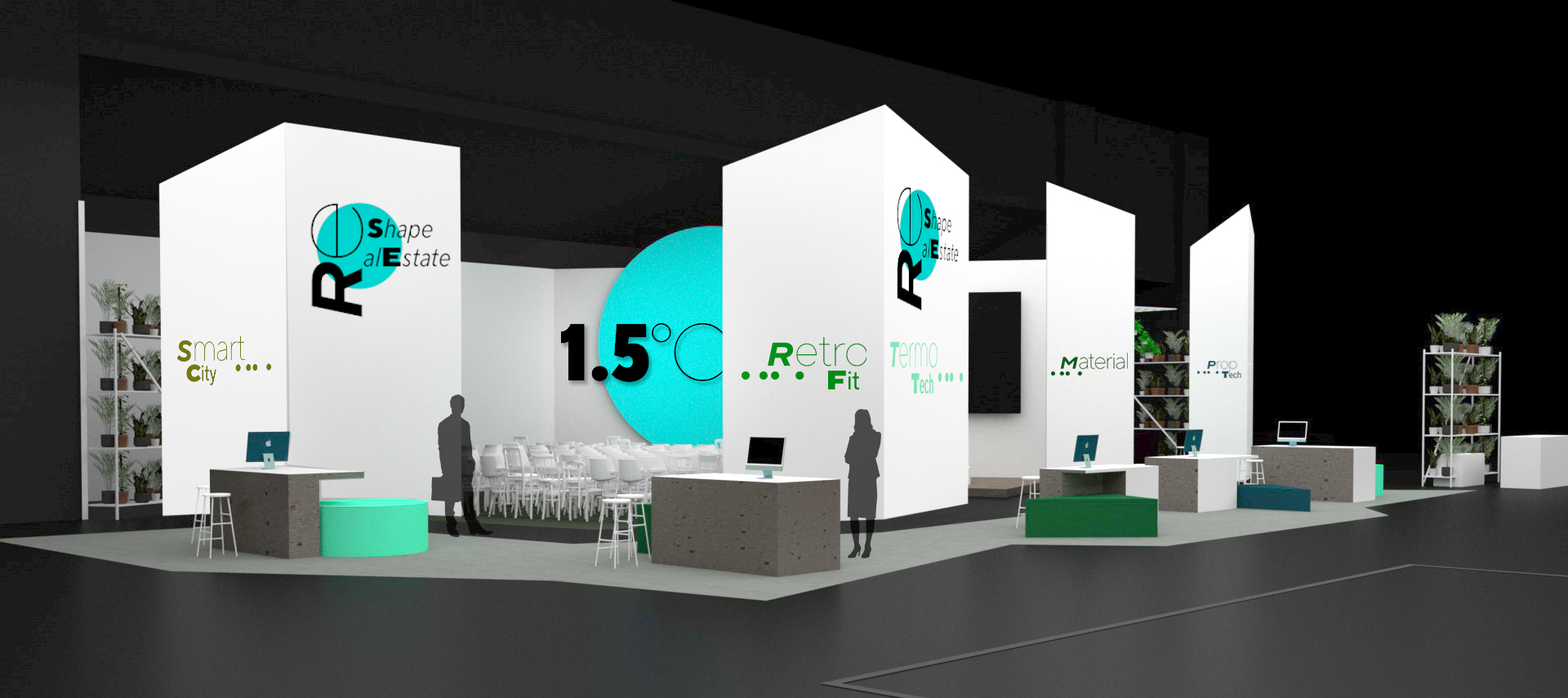The future viability of the real estate industry is dependent on the climate transition. Expo Real 2023 sets the tone for the new era: It’s time to ReShape Real Estate. It creates a forum to show how it’s done: making the climate transition work.
Our concept outlines an attention-grabbing location, a special area in the Nova3 hall (innovations), where innovative solutions and practical examples can be presented, discussed in a dialog forum and networked. Our concept outlines an attention-grabbing location, a special area in the Nova3 hall (innovations), where innovative solutions and practical examples can be presented, discussed in a dialog forum and networked.
Concept
Claim
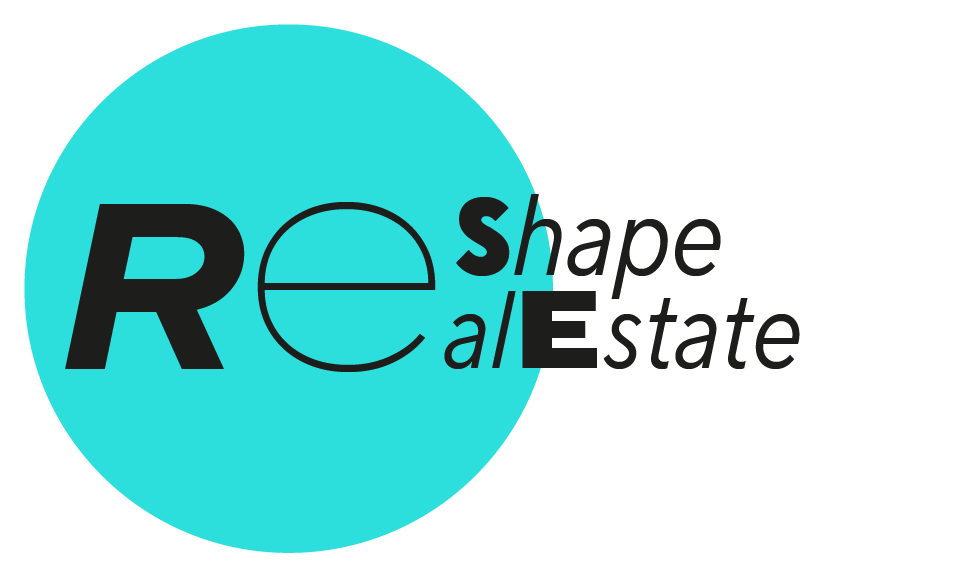
The entire presence reflects the transformation = “ReShape” in its use of forms and in its circular implementation. “Re” stands for the transformation and at the same time it is the acronym for “Real Estate”.
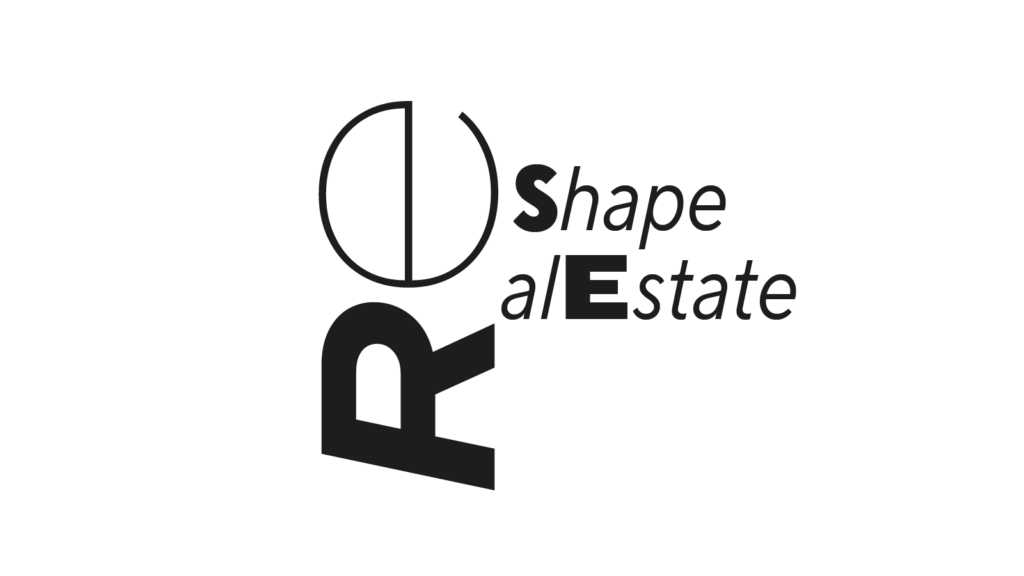
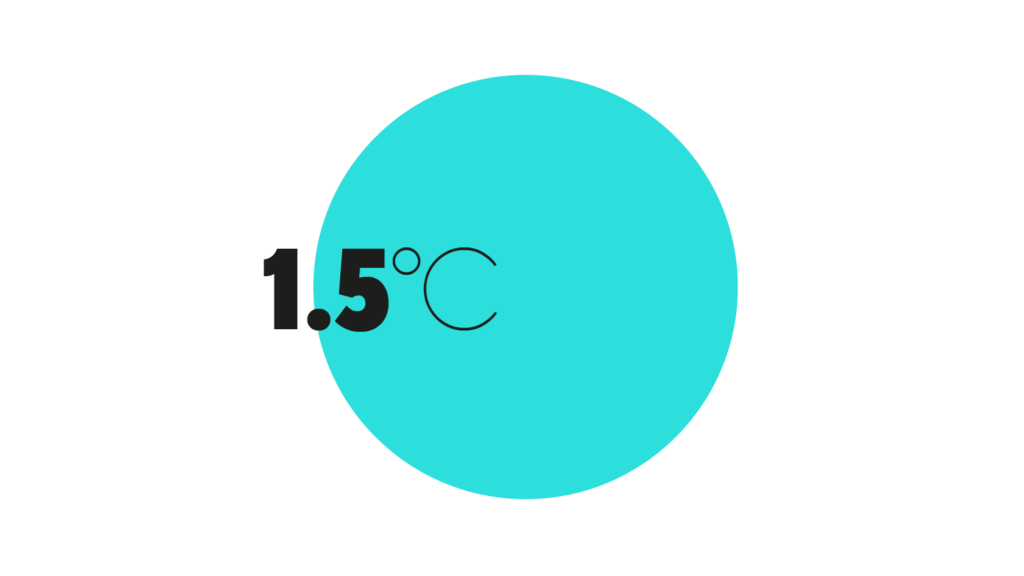
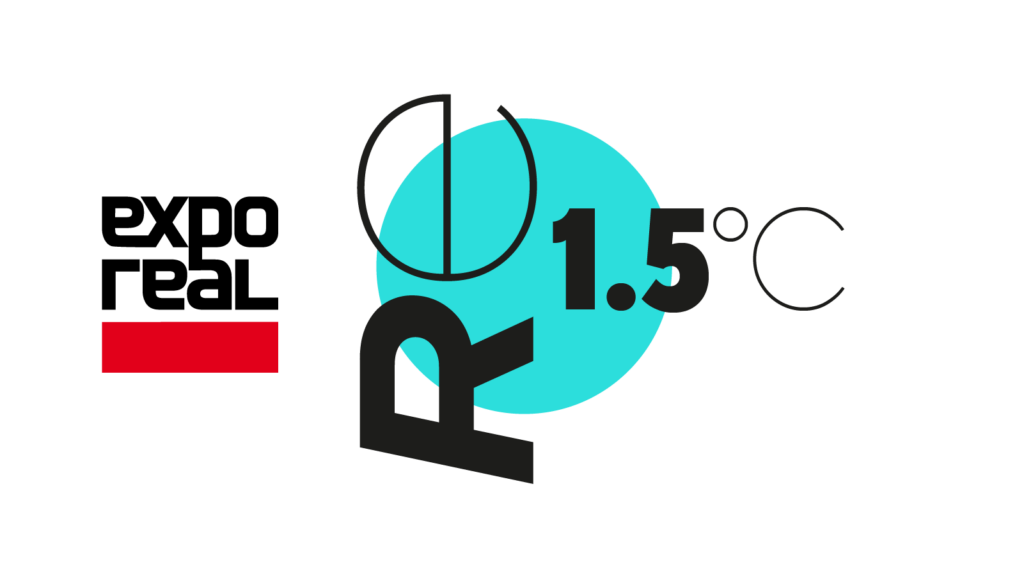
The branding plays with typographic contrasts and, as a design system, offers a wide range of possibilities in terms of application, concise reduction and expansion – always with the goal of 1.5°C in mind.

The light-looking architecture creates a welcoming place with a striking long-distance effect. Floating textile surfaces enclose the interior lecture area, with generous cut-outs providing access and visual references.
The dynamically cut design consistently brings the theme of “ReShape” to life and, through the sophisticated angles and beveled upper edges, creates recognizable references to an urban city silhouette.
At the main focal point, the textile surfaces create a portal with a view of the stage with the striking 1.5°C circle. An image that will be remembered.

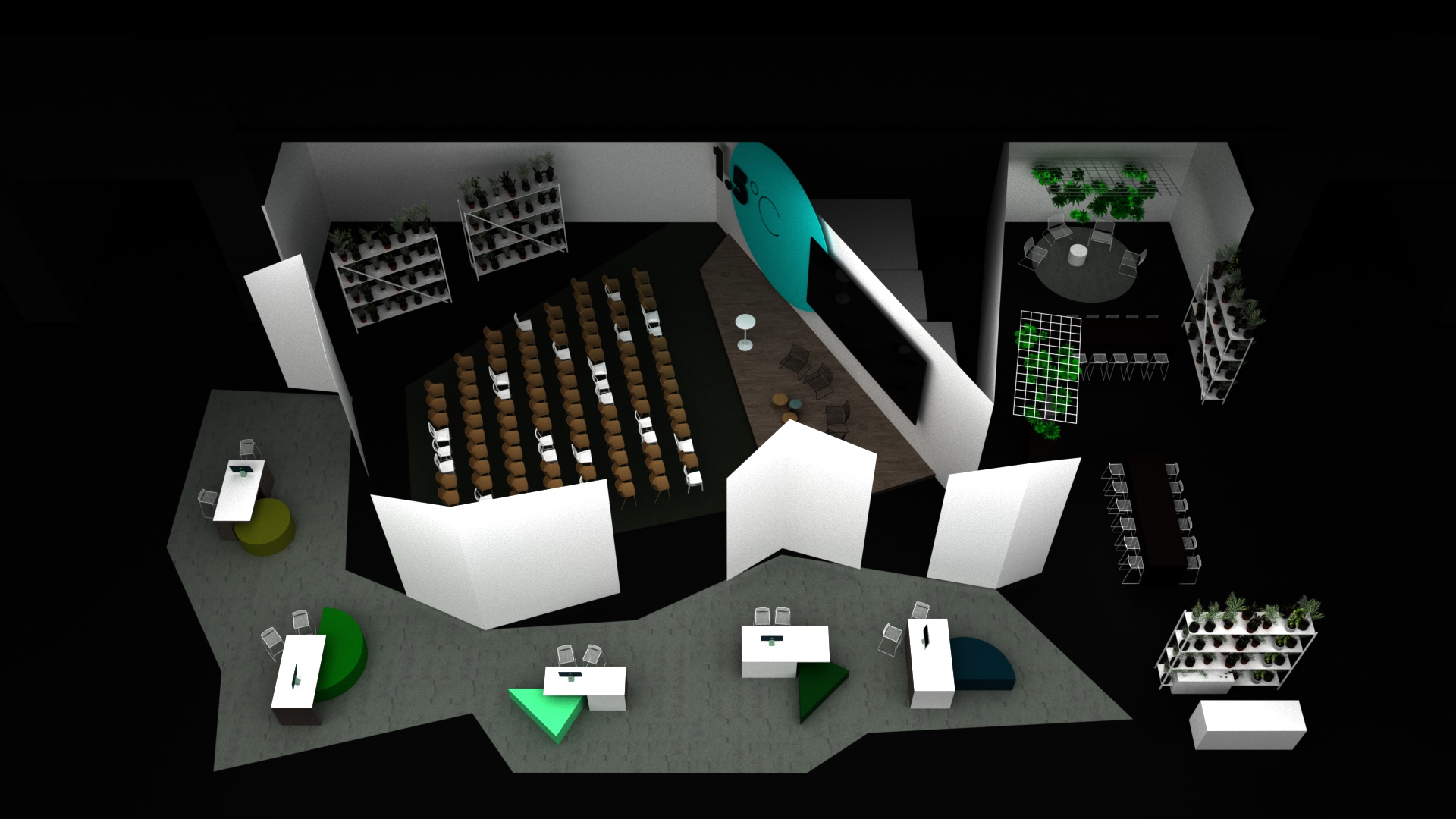
ReShape by Innovation
The facade also forms the backdrop for the startup zone in front of it.
Every day, different companies can present their innovations for a decarbonized real estate industry at the startup spots. With their individual shapes and colors, the startup spots act as innovative drivers, as transformation accelerators: ReShape by Innovation.

The five thematic areas are reduced to five keywords and form a thematic horizon on the facade, to which the startups can be assigned. Visitors can see the topics at a glance under the branding. The cyan-colored dots create a reference to the branding and to the goal to which the innovations contribute: 1.5°C.
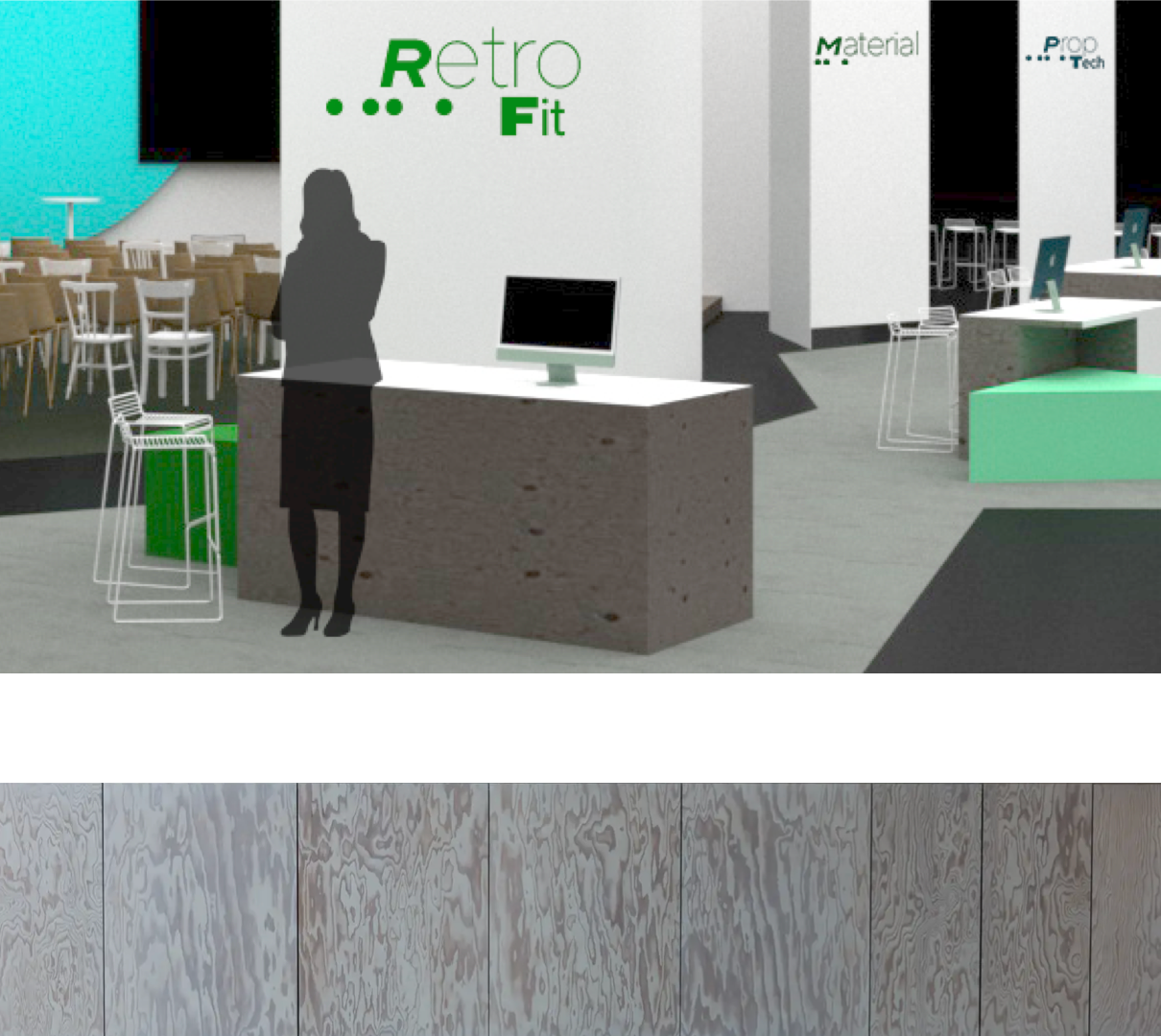
Glazed maritime pine inlays, colored seats and matching technology
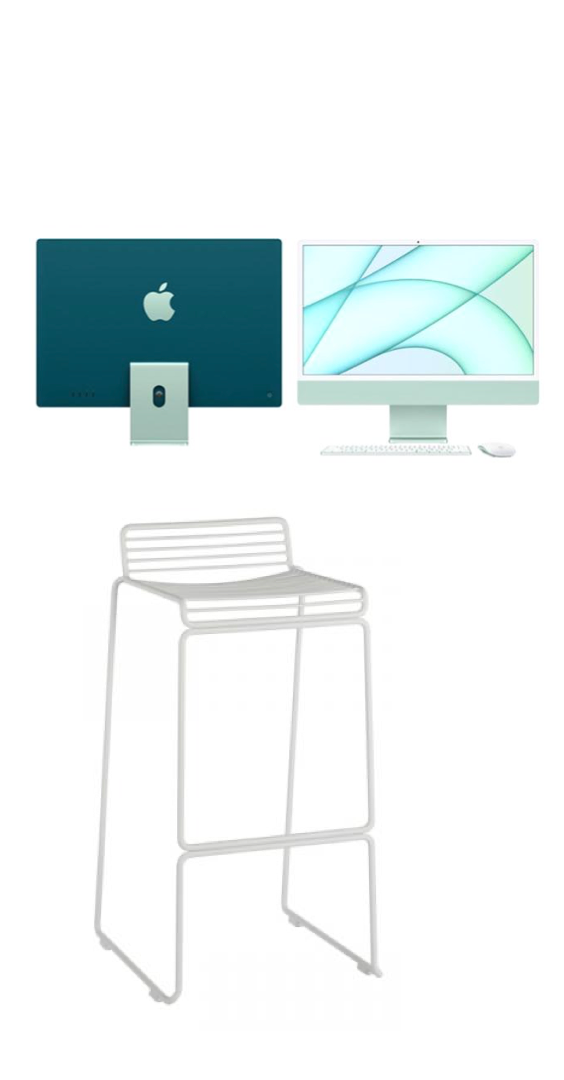
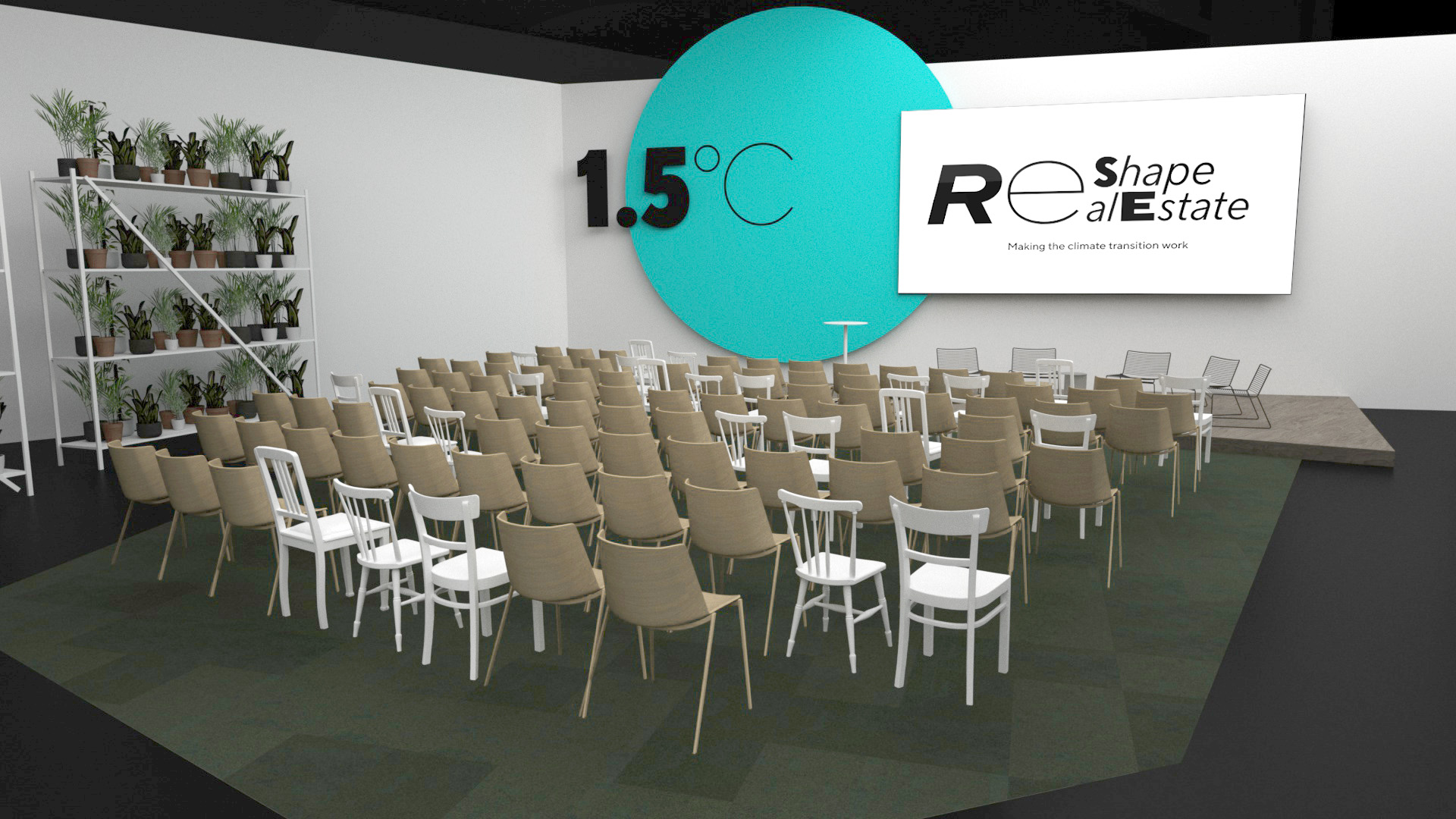
The lecture area is furnished with designer furniture made of solid wood, giving it a modern, natural and warm atmosphere. The modern furniture is mixed with interspersed “upcycling” furniture: a charming sign of the shift towards re-use.
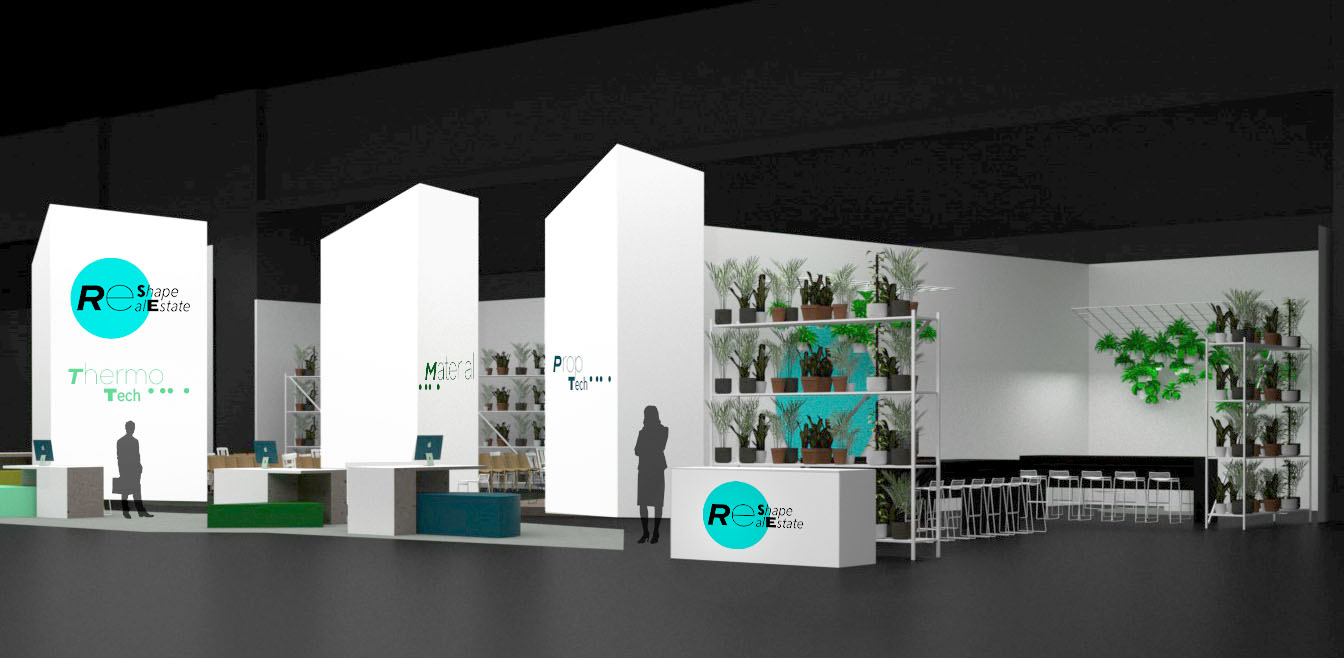
The community area:: Connect & taste circular
The reception and community areas are functionally linked along the main axis.
A natural spatial atmosphere is supported by loosely arranged plant walls. The plant pots are mounted on rough system scaffolding: native plants that can be used indoors and outdoors and are transferred to a social project at the end of each event.

How can consumption have a lasting effect? Nothing conveys this more impressively than enjoying a good coffee in a bar made from its waste product: coffee grounds. The surfaces of the bar and tables consist of composite panels made from recycled, compressed coffee grounds and water-based glue. This even makes these panels climate-positive and fully recyclable.
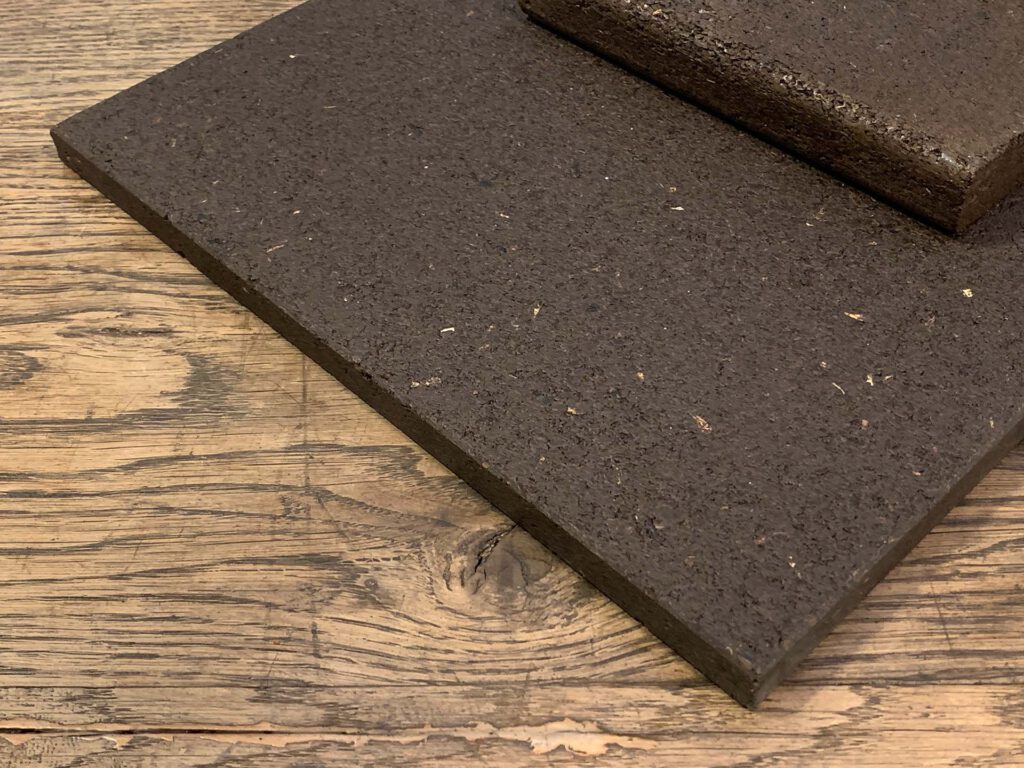
The sustainability concept: consistently circular
Keeping the footprint of an exhibition concept as small as possible means, first and foremost, limiting the use of resources and achieving the highest possible circularity. But where are the decisive levers?
- Sourcing: the use of existing materials and objects, low resource consumption through lightweight construction, a high proportion of recycled and upcycled materials, and the avoidance of fossil fuels in favor of renewable ones.
- A high level of reuse, as complete as possible, over a period of several years through modular design and processes
- In the transfer to permanent further use and, on the other hand, by returning all remaining materials to the material cycle, which is created at the beginning through appropriate design, material selection and processing.
While some materials may appear to have a green image, their effect should be carefully scrutinized, e.g. wood-based materials with B1 treatment.
Our concept not only relies on consistent ecological circularity, but also on the connection of the three pillars of environment, economy and social affairs.
Achieving financial climate neutrality by offsetting unavoidable CO2 emissions is achieved through verified carbon accounting.
Circular Stories
Using QR codes, visitors to the special exhibition can transparently understand how the circular design works at the respective stations and building elements: where the raw materials come from, how they are used and what their further use and recycling path looks like.

